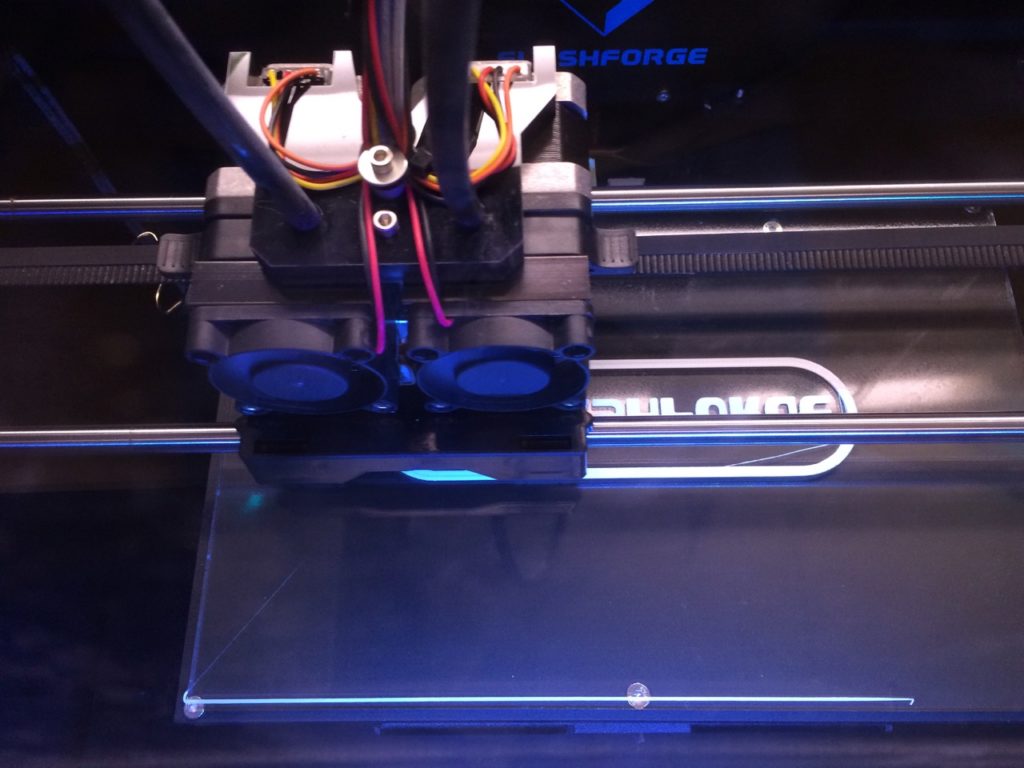3D Printing
Back in early 2013, Sui and I decided that 3D printing was a technology worthy of some time and effort. After much hemming-and-hawing, I finally purchased a Solidoodle 3. It was one of the later first generation (or early second generation) models on the market.
Solidoodle 3
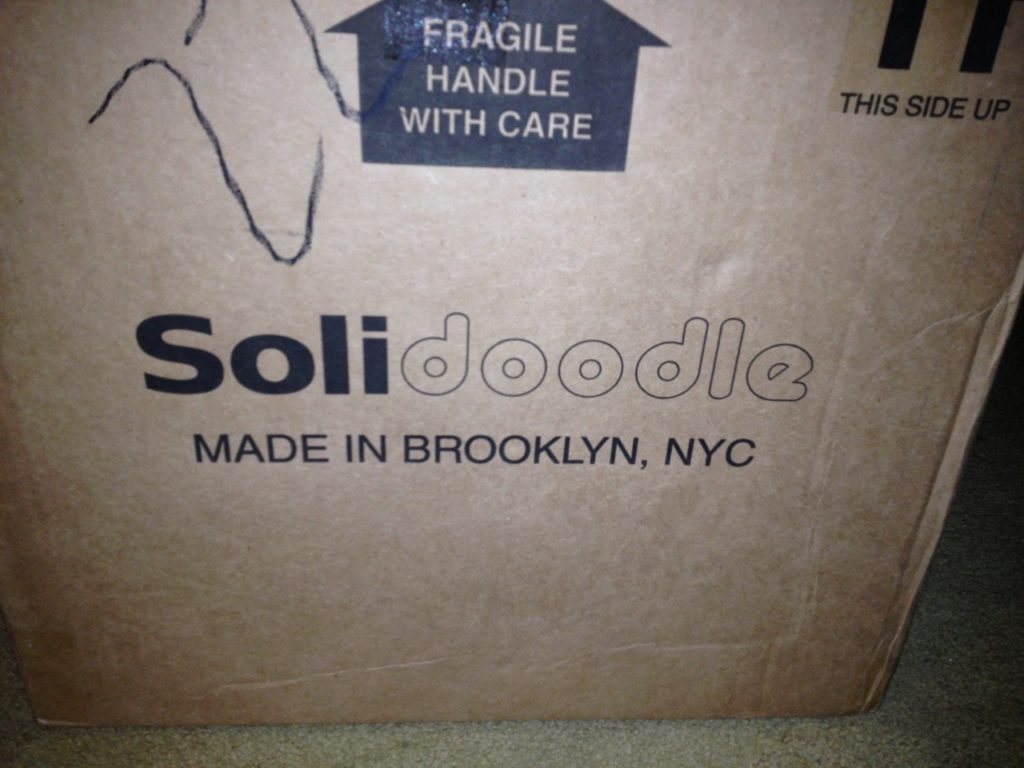

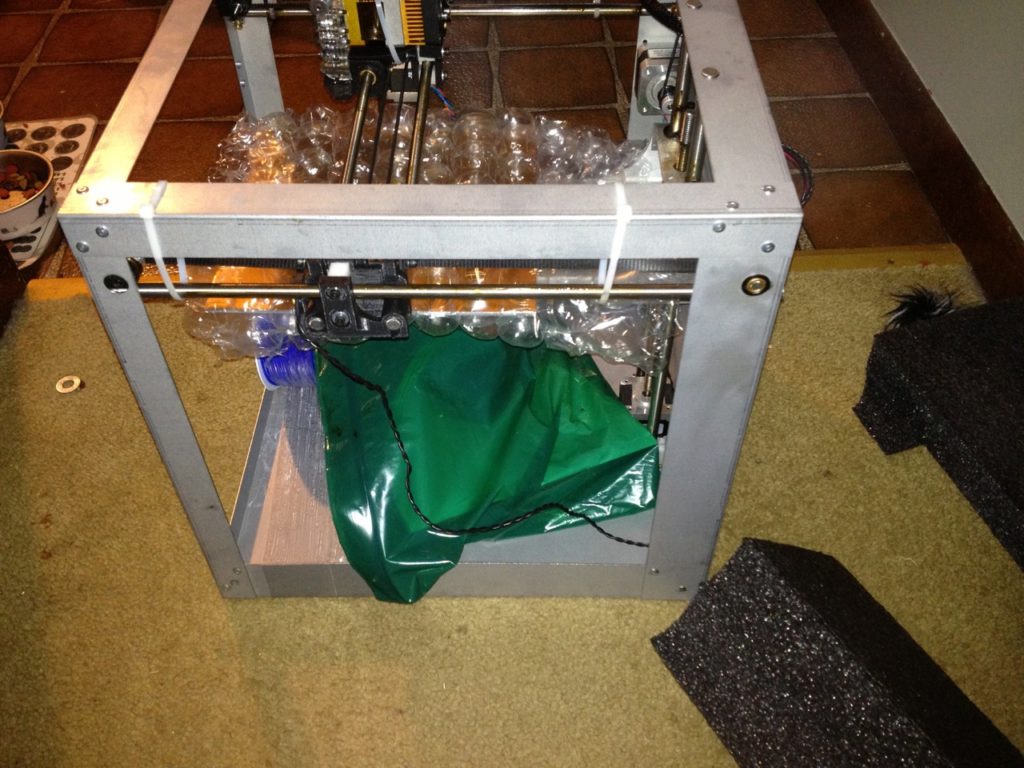
Mechanically well built, but we quickly learned that 3D printers were in the same state as the personal computer market in the mid 1970s. Lots of “fully tested and assembled” products, which meant they worked at least most of the time and only with very specific conditions. The instructions (if you want to call them that) consisted of one page that showed how three pieces of PVC tubing fit together to hold the filament spool. Absolutely nothing about how to get started. We slowly figured out we needed a slicer program. After weeks of completely useless prints, we found a webpage that talked about tuning. Then another page taught us how to adjust printing parameters. On and on it went. After a few months we finally got things pretty well most of the time.
Our first print, it was supposed to be some sort of guitar pick for our son:

Here’s a close-up of a salamander we used as a test print for quite a while, showing we didn’t have anything set up right. Notice that each strip of output isn’t touching the one next to it, making a very poor looking print:
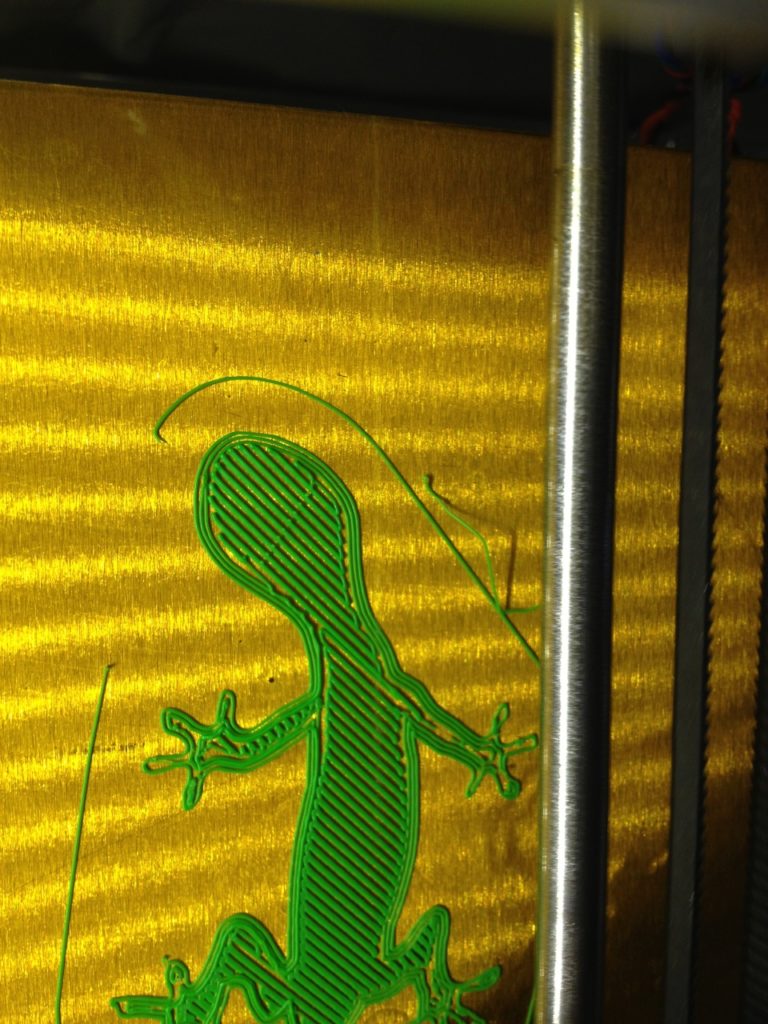
As we slowly figured things out, the same pattern started printing better, but still not good:
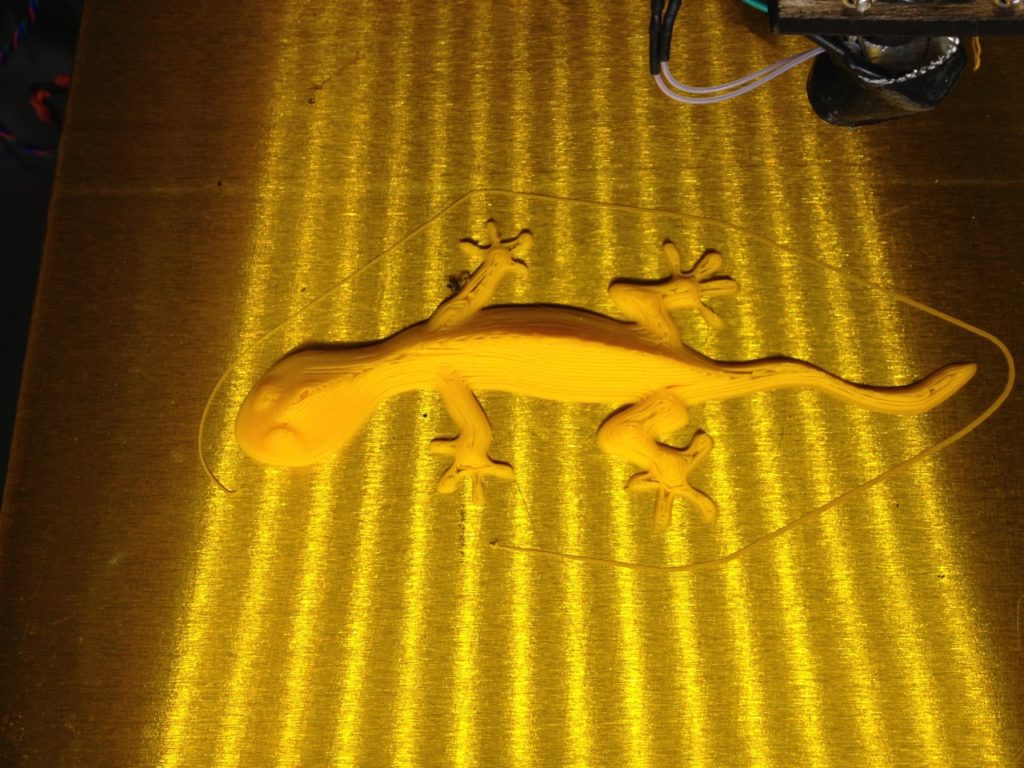
One problem was peeling. As parts of the lizard started to cool, it would start pulling off the print bed. Two changes fixed this: (A) printing on glass instead of Kapton tape, and (B) using a glue to coat the glass before printing:

Mr Lizard started looking a lot better as we slowly fixed one problem at a time:
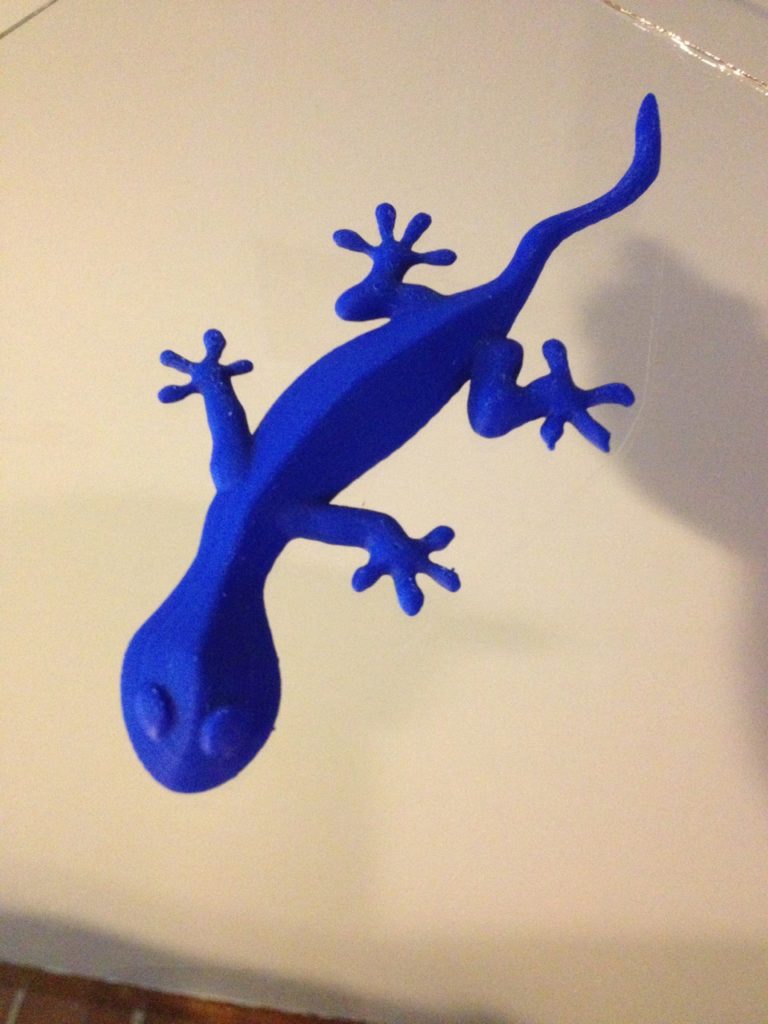
Eventually we were able to do much bigger prints:
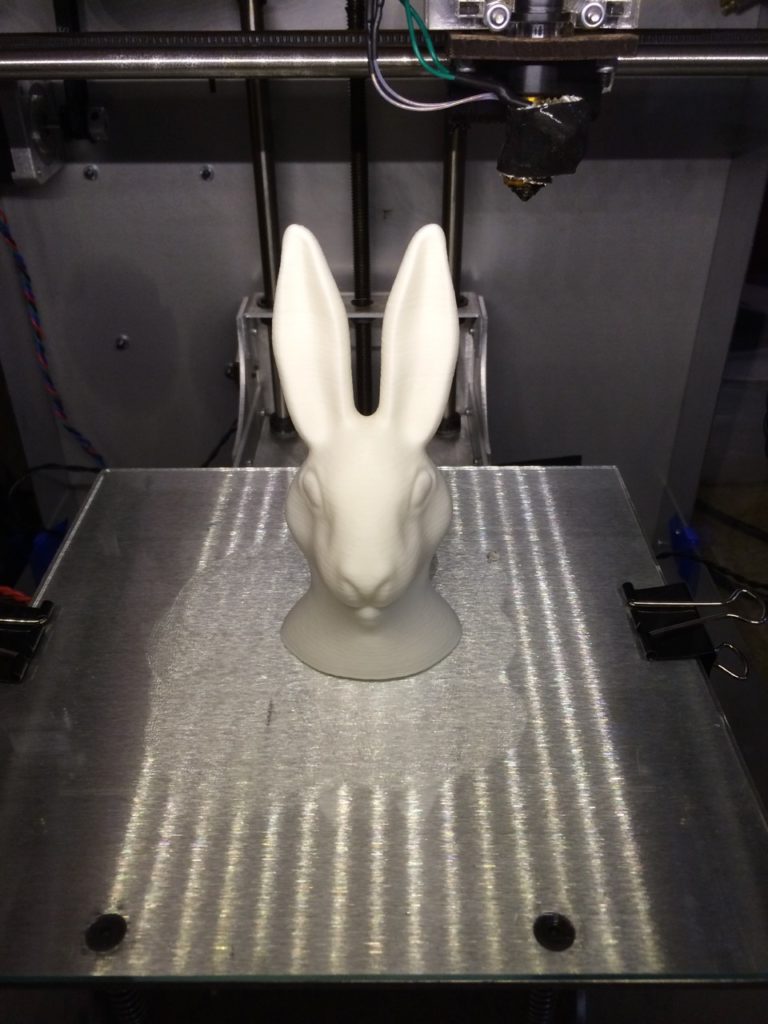
However, the controller board was poorly done and we had a common problem of melting some traces and connectors:
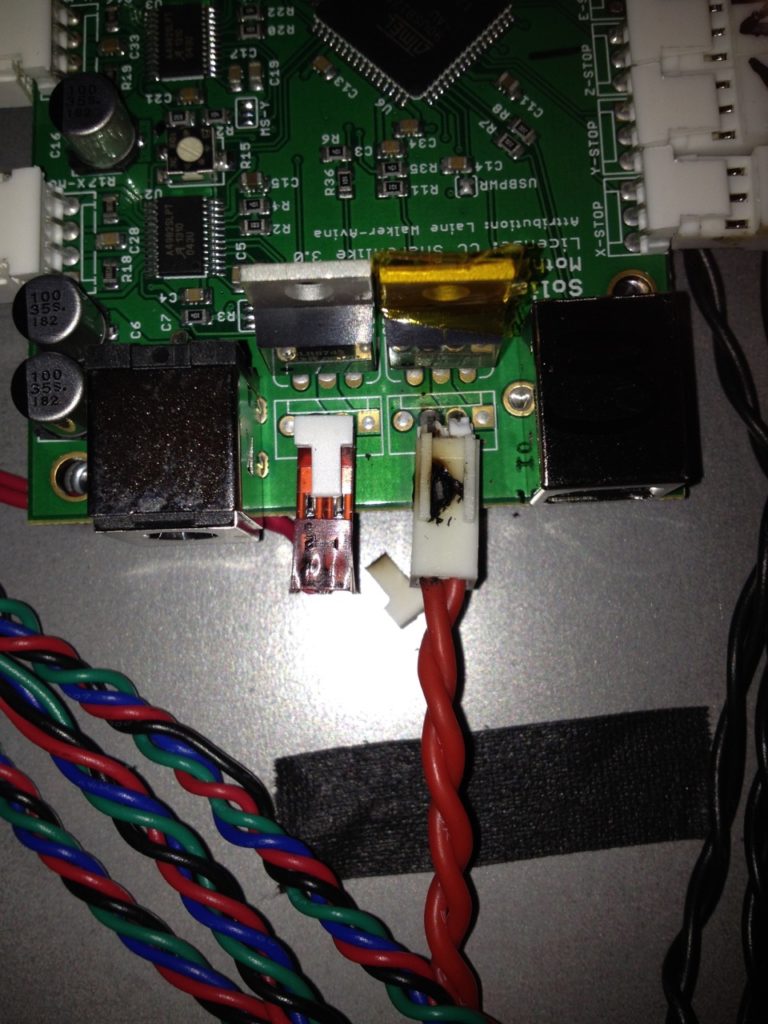
BTW, our son was about to leave for the 2013 Boy Scout National Jamboree and we were hoping to print something he could take with him. By the time he left we had nothing working right, but a few days later we got some Domos printed and shipped a couple down along with a lot of treats from home:
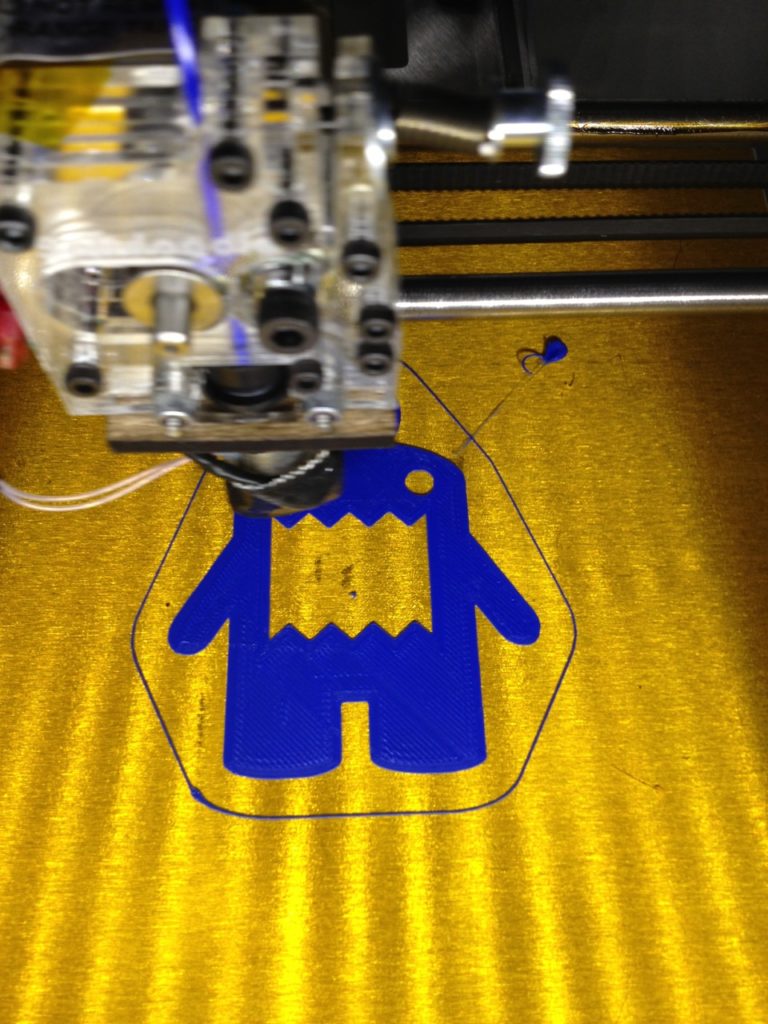
Solidoodle left the market in 2016, so we now have an unsupported collector’s item.
If you don’t mind a ton of four-letter words, this page has some strong language but is pretty accurate in its assessment of what a Solidoodle customer got when they opened their box. You’ve been warned.
FlashForge Creator Pro
The draw of dual extruders was very tempting, so in 2014 we started the search again and settled on the Creator Pro. Having dual extractors means it’s possible to print two colors, or print one main image and a supporting structure that can be washed away later.
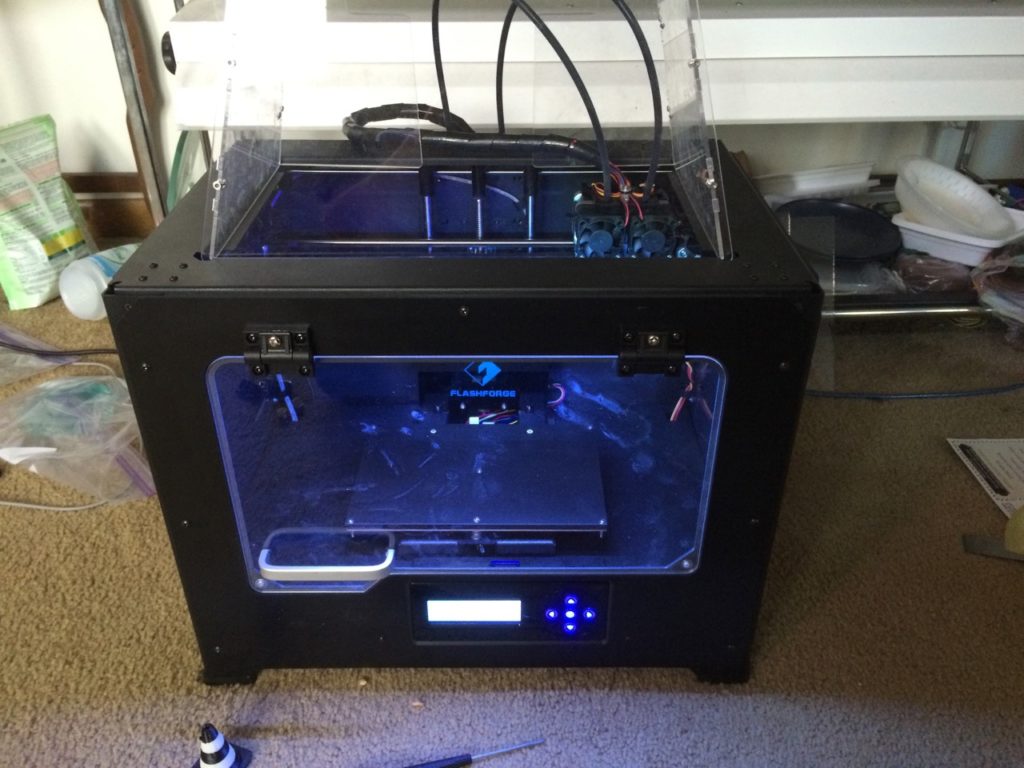
Two extruders…
